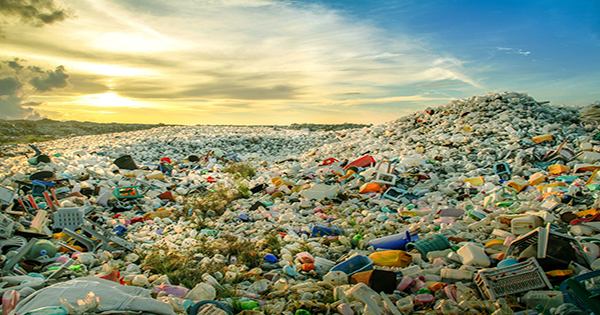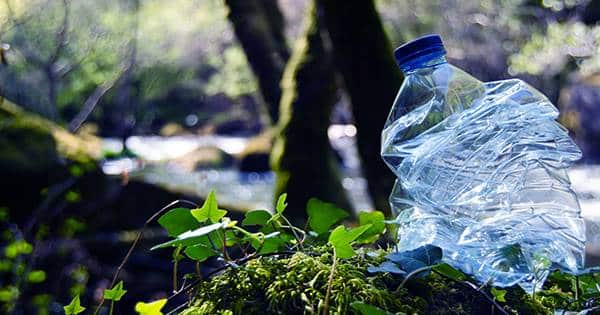Sophie van Lange, a Ph.D. candidate, has spent the past three years working toward a single goal: developing hard, sustainable plastic. The polymers we use now are either recyclable or tough and hard—but not both. Van Lange abandoned established chemical approaches to plastic production in favor of developing a whole new process for creating durable and reusable plastic. What’s the trick? Physical forces.
The procedure starts with a fairly basic setup: yellow powder in one dish and white powder in another. Within two weeks, Van Lange dissolves and combines these two solutions before submitting them to heat and pressure in a hot press.
Under normal conditions, the produced plastic is strong and hard, but it becomes reformable when heated. She calls these revolutionary plastics “compleximers.” Van Lange and her colleagues write about this in Science Advances.
Sustainable Plastic Processing
Plastics are everywhere in our daily lives, from the wrapping of peppers and cucumbers in the store to the packing of new toys. “But plastic is also incorporated in the shoes on my feet and the glasses on my nose,” Van Lange explains, gesturing to her pink glasses. However, we rarely think about what happens to these materials after the shoes break or when we need new spectacles.

“You can take old items to a recycling point, but hardly anyone knows exactly what happens to them afterward,” explains the 21-year-old researcher. Consider shoe soles, which are likewise made of plastic. After use, we can only burn or ground it.
Other plastics, such as the bag around a pepper and the layer in a milk carton, can be recycled.
“How great would it be if we could process all plastics sustainably,” Van Lange goes on to remark. She is motivated by her passion for sustainable materials and works on this novel plastic in the Physical Chemistry and Soft Matter chair group. “I think sustainable materials are cool,” she said.
“On a molecular scale, plastics consist of long chains,” argues Van Lange. Chemical cross-links unite these chains in typical hard plastics to give them strength. However, the cross-links are so strong that recycling is almost impossible. That’s why Van Lange recreated these plastics without chemical cross-links, this time with tunable physical forces.
Forces of attraction
“Half of the chains that make up our plastic are positively charged,” says Van Lange.
“The other half is negatively charged.” When they come into proper contact, they attract each other in the same way that two magnets do. This holds the chains together without the use of chemical crosslinks. When heated, the attraction between the components decreases, allowing the material to restructure. “This enables the plastic to be reused or, for example, to repair a hole or other damage in the plastic with heat,” Van Lange said.
So far, the candidate has made about three grams of the novel material. “It took a while before my colleagues and I had the desired plastic,” she said. It all came down to attraction: in nature, positive and negative particles are strongly attracted to each other. This causes materials to become brittle and practically impossible to deform when heated. “The innovation lies in sufficiently weakening that charge,” explains Van Lange.
She achieved this by creating a “molecular umbrella” that partially protects the plastic’s positive and negative charges. “That is how we achieved the perfect attraction force and, consequently, plastic that is easily deformable when heated,” explains the applicant Furthermore, these umbrellas are water-repellent, guaranteeing that the plastic remains durable even when exposed to water. When stepping into a puddle, a fresh plastic shoe sole remains solid. “Charged material is almost always sensitive to water, so achieving this is very special,” Van Lange said.
More flexibility
The new plastic is not yet fully ready. For example, the material is not yet flexible enough, according to Van Lange: “We demonstrated that the concept works, but now we need to find a way to give it more rubber-like properties.” The researcher wants to accomplish this by lowering the charge in compleximers, possibly by modifying the building blocks of the chains that comprise the plastic.
“An alternative could be to enlarge the molecular umbrellas,” says Van Lange. She also contemplates changing the type of chain. “We currently use polystyrene, which is a stiff molecule,” says the candidate. “If we replace it with a more flexible variant, we might already get a more bendable plastic.”
Although the material is not yet ready for market, the candidate believes that her work will serve as an inspiration to other researchers. Her research shows that thinking outside the box can result in whole new materials. “I want to motivate other scientists to look at materials differently and use them in unconventional ways,” Van Lange said.














